Ulinastatin Ameliorates IL-1 β-Induced Cell Dysfunction in Human Nucleus Pulposus Cells via Nrf2/NF- κ B Pathway
- PMID: 33968294
- PMCID: PMC8084647
- DOI: 10.1155/2021/5558687
Ulinastatin Ameliorates IL-1 β-Induced Cell Dysfunction in Human Nucleus Pulposus Cells via Nrf2/NF- κ B Pathway
Abstract
Low back pain (LBP) has been a wide public health concern worldwide. Among the pathogenic factors, intervertebral disc degeneration (IDD) has been one of the primary contributors to LBP. IDD correlates closely with inflammatory response and oxidative stress, involving a variety of inflammation-related cytokines, such as interleukin 1 beta (IL-1β), which could result in local inflammatory environment. Ulinastatin (UTI) is a kind of acidic protein extracted from human urine, which inhibits the release of tumor necrosis factor alpha (TNF-α) and other inflammatory factors to protect organs from inflammatory damage. However, whether this protective effect of UTI on human nucleus pulposus (NP) exists, and how UTI affects the biological behaviors of human NP cells during IDD remain elusive. In this current study, we revealed that UTI could improve the viability of NP cells and promote the proliferation of NP cells. Additionally, UTI could protect human NP cells via ameliorating IL-1β-induced apoptosis, inflammatory response, oxidative stress, and extracellular matrix (ECM) degradation. Molecular mechanism analysis suggested that the protective effect from UTI on IL-1β-treated NP cells were through activating nuclear factor- (erythroid-derived 2-) like 2 (Nrf2)/heme oxygenase-1 (HO-1) signaling pathway and the suppression of NF-κB signaling pathway. Therefore, UTI may be a promising therapeutic medicine to ameliorate IDD.
Copyright © 2021 Xi Luo et al.
Conflict of interest statement
The authors have declared no conflict of interest.
Figures
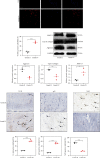
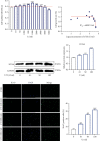

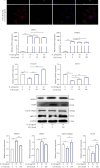
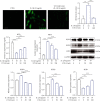

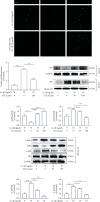
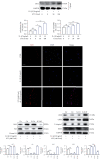
Similar articles
-
Cardamonin protects nucleus pulposus cells against IL-1β-induced inflammation and catabolism via Nrf2/NF-κB axis.Food Funct. 2021 Mar 21;12(6):2703-2714. doi: 10.1039/d0fo03353g. Epub 2021 Mar 5. Food Funct. 2021. PMID: 33666626
-
Naringin Protects Against Interleukin 1β (IL-1β)-Induced Human Nucleus Pulposus Cells Degeneration via Downregulation Nuclear Factor kappa B (NF-κB) Pathway and p53 Expression.Med Sci Monit. 2019 Dec 25;25:9963-9972. doi: 10.12659/MSM.918597. Med Sci Monit. 2019. PMID: 31927560 Free PMC article.
-
Luteoloside Inhibits IL-1β-Induced Apoptosis and Catabolism in Nucleus Pulposus Cells and Ameliorates Intervertebral Disk Degeneration.Front Pharmacol. 2019 Aug 5;10:868. doi: 10.3389/fphar.2019.00868. eCollection 2019. Front Pharmacol. 2019. PMID: 31427974 Free PMC article.
-
Role of Nrf2 and HO-1 in intervertebral disc degeneration.Connect Tissue Res. 2022 Nov;63(6):559-576. doi: 10.1080/03008207.2022.2089565. Epub 2022 Jun 23. Connect Tissue Res. 2022. PMID: 35736364 Review.
-
The Nrf2 antioxidant defense system in intervertebral disc degeneration: Molecular insights.Exp Mol Med. 2022 Aug;54(8):1067-1075. doi: 10.1038/s12276-022-00829-6. Epub 2022 Aug 17. Exp Mol Med. 2022. PMID: 35978054 Free PMC article. Review.
Cited by
-
Sesn2 Serves as a Regulator between Mitochondrial Unfolded Protein Response and Mitophagy in Intervertebral Disc Degeneration.Int J Biol Sci. 2023 Jan 1;19(2):571-592. doi: 10.7150/ijbs.70211. eCollection 2023. Int J Biol Sci. 2023. PMID: 36632468 Free PMC article.
-
Oxidative stress in intervertebral disc degeneration: Molecular mechanisms, pathogenesis and treatment.Cell Prolif. 2023 Sep;56(9):e13448. doi: 10.1111/cpr.13448. Epub 2023 Mar 13. Cell Prolif. 2023. PMID: 36915968 Free PMC article. Review.
-
Limonin Inhibits IL-1β-Induced Inflammation and Catabolism in Chondrocytes and Ameliorates Osteoarthritis by Activating Nrf2.Oxid Med Cell Longev. 2021 Nov 9;2021:7292512. doi: 10.1155/2021/7292512. eCollection 2021. Oxid Med Cell Longev. 2021. PMID: 34795843 Free PMC article.
-
Clinical Efficacy of Ulinastatin Combined with Azithromycin in the Treatment of Severe Pneumonia in Children and the Effects on Inflammatory Cytokines and Oxidative Stress: A Retrospective Cohort Study.Infect Drug Resist. 2023 Nov 8;16:7165-7174. doi: 10.2147/IDR.S428900. eCollection 2023. Infect Drug Resist. 2023. PMID: 38023407 Free PMC article.
-
Mitochondrial quality control: the real dawn of intervertebral disc degeneration?J Transl Med. 2024 Dec 20;22(1):1126. doi: 10.1186/s12967-024-05943-9. J Transl Med. 2024. PMID: 39707402 Free PMC article. Review.
References
-
- Peng B., Wu W., Hou S., Li P., Zhang C., Yang Y. The pathogenesis of discogenic low back pain. The Journal of bone and joint surgery. British volume. 2005;87(1):62–67. - PubMed
-
- Wang K., Chen T., Ying X., et al. Ligustilide alleviated IL-1β induced apoptosis and extracellular matrix degradation of nucleus pulposus cells and attenuates intervertebral disc degeneration _in vivo_. International immunopharmacology. 2019;69:398–407. doi: 10.1016/j.intimp.2019.01.004. - DOI - PubMed
MeSH terms
Substances
LinkOut - more resources
Full Text Sources
Miscellaneous

